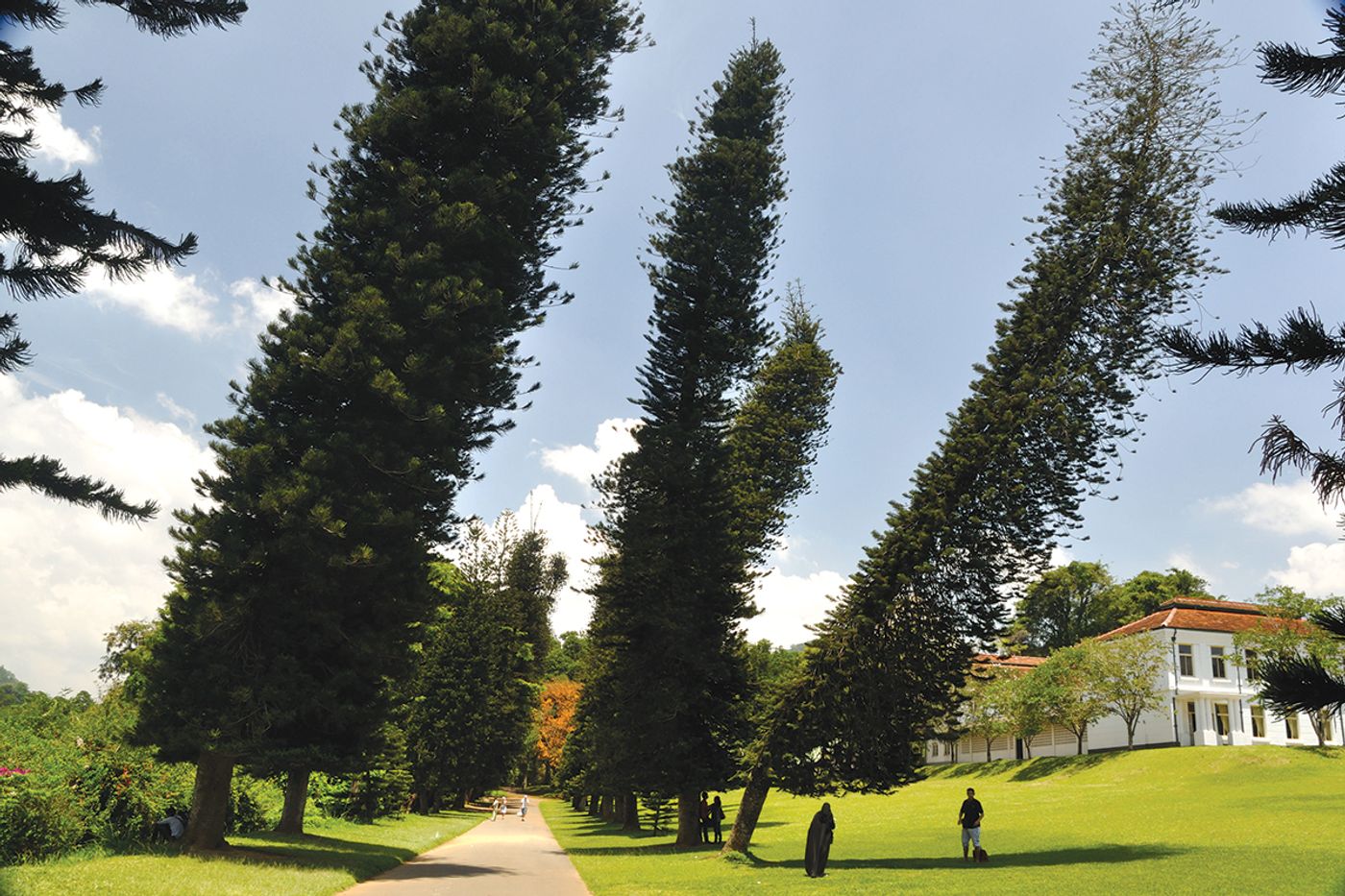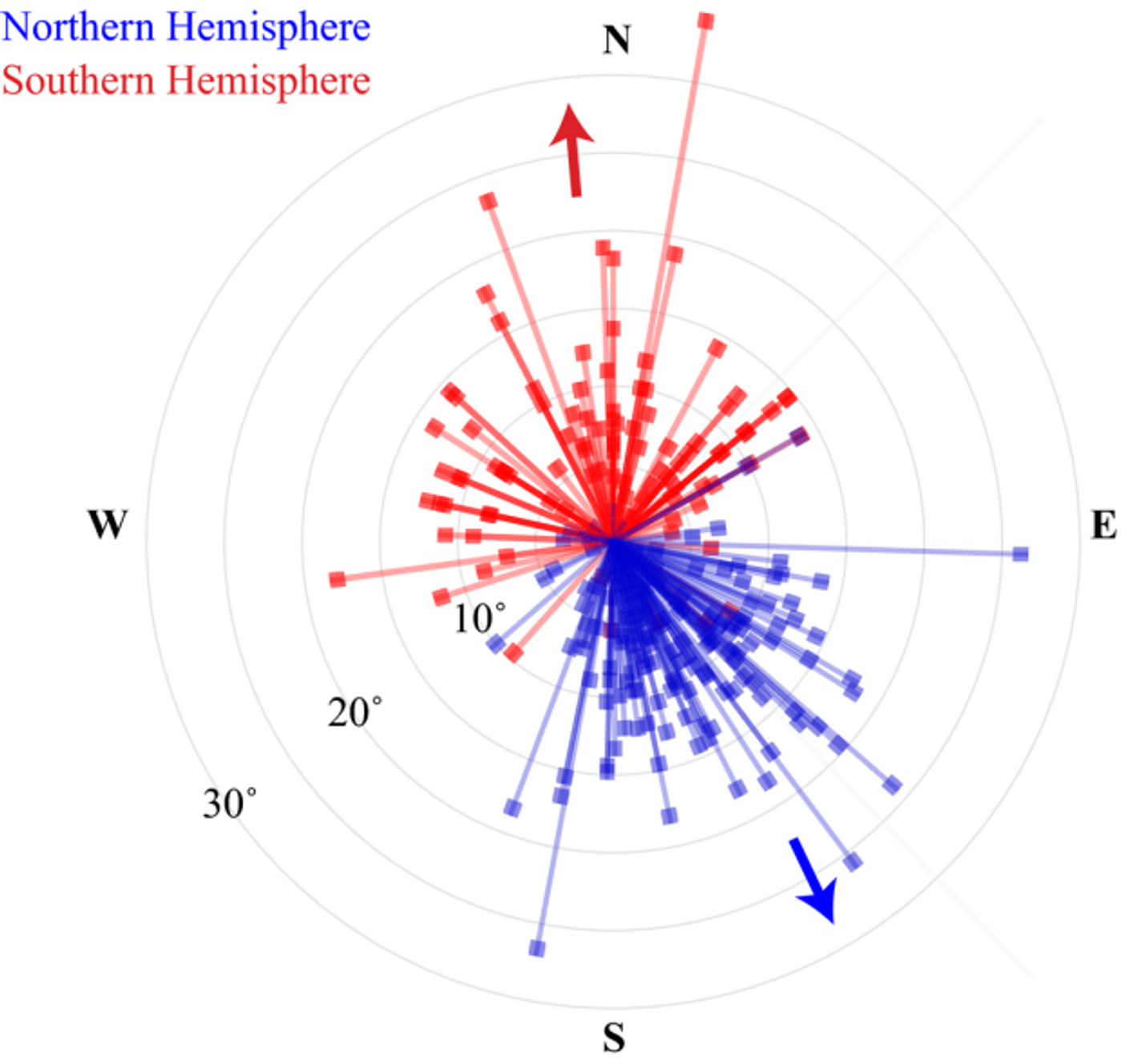The Tree Compass - Cook Pines Demonstrate Equator-Oriented Leaning
Ever got lost the woods? There are a few tricks that can help you find your way, for example the position of the sun in the sky, the direction of the big dipper and North Star, and the position of moss on trees. Now you can add Cook pines to the list - researchers discovered that the Cook pines, or Araucaria columnaris for the taxonomy enthusiasts out there, have the tendency of leaning toward the equator, wherever they grow.
It is well known that many life forms, beside human, have instinct for direction. A lot of them such as arthropods, molluscs and carrier pigeons utilize an ability called magnetoreception to navigate and travel. Also known as magnetoception (has nothing to do when Dr. Xavier’s frienemy) is a naturally existing instinct of an organism to sense direction under the guidance of a magnetic field (usually the one of Earth). Most human do not have a magnetic sense (who needs it when you have a compass), but there is a cryptochrome protein in human eyes which could theoretically serve this function.
Related reading: magnetoreception in animals
Intense Leaning of Cook Pines. Credit: Steve Lennie/Alamy Stock Photo
Named after Cpt. James Cook, the New Caledonia native species often grow up to 98 feet tall. As reported on the journal Ecology, a group of botanists from California Polytechnic State University measured 256 trees on five continents in 18 different regions (minimum 500 km apart between regions), spanning 7°–35° N and 12°–42° S latitude, including Cook pines’ native home. The height, trunk diameter at 1.5 m above ground, azimuth direction of lean, and the extent of lean of each tree was recorded and analyzed. The pattern was clear: the trees all lean toward the equator to various extend. What is more interesting, other species within the same family of trees don't behave this way at all.
Cook Pine Leaning Pattern. Credit: Ecology
Since there is no clear explanation for the leaning feature of Cook pines, the authors suspected that the deposit of starch producing organelles at the plant cell’s actin filament activated a signal pathway that leads to the asymmetric transport of growth hormone hence uneven growth at the tree stem. Genetic analysis of the species identified several gene families that are known to trigger phototropic (phototropism is the orientation of an organism in response to light) and gravitropic (gravitropism is the orientation or growth of plants and fungus in response to gravity) growth. Despite the preliminary findings, the mechanism(s) underlying the species’ directionality remain highly debatable. As the authors pointed out, the equator-oriented leaning could an adaptive response to a variety of factors such as angles of annual sunlight, gravity, magnetism, or any combination of these.
Source: CBC/Ecology (Journal)










